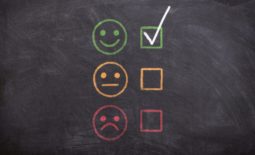Not Magic: Who’s On Facebook, Twitter, and YouTube in the U.S.

Despite claims to the contrary, social media isn’t magic. It’s simply a large group of people who log on to same platform. This means that simply creating a Facebook page does not guarantee you will have a 200% increase in the number of new customers who find your website.
So why use social media for your business? Because there are lots and lots of people who log on to each platform. And many of them could be potential customers, if you know where to look.
Below we explore who’s on social media to give you a more in-depth idea of who you’re targeting when you post.
Not All Social Media Sites Are Alike
Although it is estimated that over 500 social media sites exist, only a few high-performing sites are financially solvent and likely to thrive. You’ve surely heard of the social media “superpower” sites: Facebook, Twitter, Youtube, etc. But have you heard of Diaspora or Ping? There’s a reason for that: they failed.
And while the main social media sites may be a good bet for your business, what you may not know is that the demographics of users vary strongly between these sites. To avoid targeting the wrong people, consider exactly who is using each site and what that might mean for your organization’s social media marketing efforts.
Who’s on Facebook in the U.S.
Facebook is a social media giant. Approximately 90% of U.S. social media users are members of Facebook. Over 56% of U.S. residents use Facebook. What’s more, U.S. Facebook users are committed: 70% are on Facebook on a daily basis.
In addition to being a force on social media, U.S. Facebook users are diverse. Not surprisingly, Facebook attracts a young crowd: 63.7% of U.S. teens and 84% of U.S. residents 18 to 29 years old use Facebook. However, a growing number of U.S. residents from the 30+ crowd use Facebook (including 56% of those 65 years old and older). U.S. civilians are not the only U.S. citizens who are on Facebook. Over 4 million of our active duty military members and veterans are also members of Facebook. Collectively, this diverse group of users contributes over 60% of all engagement with blog posts through Facebook’s Like and Share features.
Who’s on Twitter in the U.S.
Although Twitter does not have quite the same following as Facebook among U.S. residents, its impact is substantial: 23% of U.S. adults use Twitter. Of those U.S. adults who use Twitter, 36% use Twitter on a daily basis.
Unlike U.S. Facebook users, U.S. Twitter users tend to be young. Although roughly ¼ of U.S. adult females and ⅕ males are Twitter users, 31% of U.S. teens and 38% of U.S. Millenials are Twitter users. In fact, 46% of U.S. college students who use Twitter tweet on a daily basis.
Twitter may have more of a niche following than Facebook and a lower content share rate among U.S. residents (at 6%), but it is also a site that should not be overlooked.
Who’s on YouTube in the U.S.
Although Facebook and Twitter are often mentioned before YouTube in discussions about social media, YouTube is by far the most popular social media site in the U.S. Over 81% of U.S. Internet users are on YouTube.
Who uses YouTube in the U.S.? 81.9% of teenagers, 81% of Millenials, 58% of Generation Xers, and 43% of Baby Boomers. These users mostly listen to music, but that is not where their participation ends.
YouTube users also use YouTube for shopping. Over 10% of non-Hispanic and almost 18% of Hispanic YouTube users use YouTube for local shopping in the U.S. While 97% of nonprofits and charities take advantage of YouTube to publicize, only 9% of small businesses do so. Organizations who advertise on YouTube are wise to do so, considering that YouTube currently outscores both Facebook and Twitter on the American Consumer Satisfaction Index.
Who’s On Social Media? Possible Customers
These numbers highlight important trends to which any business who uses social media should pay attention. Although senior citizens are least likely among U.S. generations to use social media, they are increasingly using Facebook. Therefore, Facebook may be a good venue to promote initiatives targeted at any older generation, from Gen Xers on up. Twitter is a promising place to find college students, who need deals for education, startups, and sports merchandise, among other things. YouTube is a wide open market for small businesses to leverage. With more knowledge about who’s on Facebook, Twitter, and YouTube, your business can make smart decisions about who to target, and why.



How Healthcare Organizations Can Use Social Media for Relationship-Building - Content Garden
August 3, 2016 @ 2:09 am
[…] organizations can use social media to create a healthy buzz. We’ve also explained that social media is not magic: simply having Facebook and Twitter accounts does not automatically mean that your healthcare […]
What Does "Social Media Is the New Word of Mouth" Really Mean?
October 4, 2017 @ 9:02 am
[…] the same time, as we’ve pointed out before, there are a whole lot of people on social media. And they’re talking about brands. A lot. […]